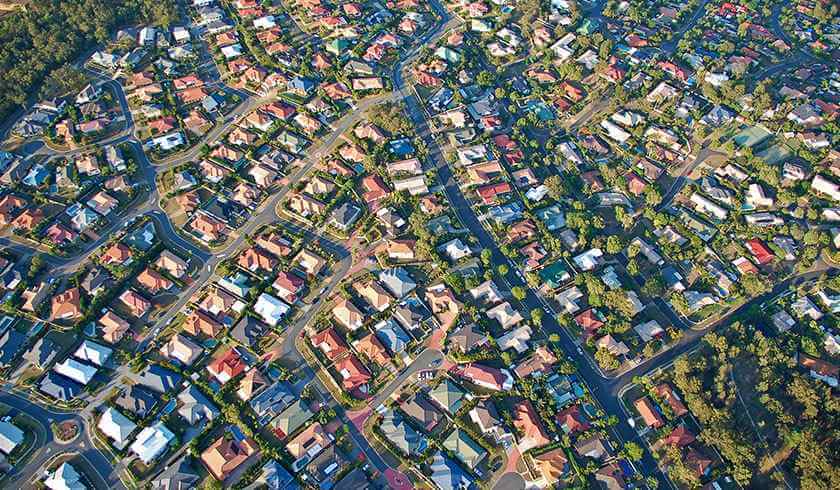Current negative gearing policy v Labor’s negative gearing policy
Negative gearing has long been popular as a tax minimisation strategy, allowing investors to offset losses incurred against their taxable income. How will negative gearing work if the government changes this year?

‘Gearing’ in property investment refers to taking out a loan or borrowing money to purchase a real estate asset.
When a property is negatively geared, it generally means that annual interest payments on a loan are higher than the net rental income – meaning, they are essentially making a loss.
Investors typically accept loss in exchange for a reduction in their tax payable, hoping that the property’s value will appreciate in time and ultimately make up for the loss they incurred once the property is sold. Since the investment loss reduces the taxable income, the amount of tax that the investor pays is also reduced.
Therefore, by implementing negative gearing as a strategy, the property-related costs are, in essence, paid for by your tenant through rental returns, by the Australian Taxation Office through tax savings and by the investor’s own surplus cash flow.
If elected, the Australian Labor Party seeks to limit negative gearing to new housing in order to “establish a sustainable federal budget, make Australia’s tax system ‘fairer’ and encourage the building of new houses to spur jobs growth and increase housing affordability.”
How negative gearing works now
Since the Hawke/Keating government made legislative reforms on negative gearing in 1985 to encourage investing, investors have been able to claim a deduction for the full amount of rental expenses against their rental and other income, such as salary, wages and business income, when they complete their tax return for the relevant income year. If the income is insufficient to absorb the loss, it is carried forward to the following tax year.
For example: The investor earns $95,000 annually and pays at a marginal tax rate of 37 per cent, amounting to $22,782 in total tax payable, plus a Medicare levy worth $1,900. This makes their annual net income $70,318.
Then, the investor purchases a negatively geared property worth $500,000 by borrowing the full amount from the bank at 5 per cent interest rate of $25,000 annually. The estimated annual operational expense is $3,000. Meanwhile, the investor receives an annual rent income of $18,000.
Even with the income from rent, the investor still needs $10,000 to cover interest repayments and operational expenses. This will have to be covered by money from his own pocket.
Under the current negative gearing policy, the government allows the income loss from the property to be offset against the investor’s taxable income.
Therefore, the investor’s annual taxable income will be reduced to $85,000 and the tax payable to $19,172 plus $1,700 Medicare levy. With the $3,180 saved in tax, the investor’s loss is down to $6,190. To break even or gain profit, the property’s value need to rise significantly over time – enough to cover all losses incurred as well as the capital gains tax (CGT) to be paid once the property is sold.
How Labor’s negative gearing will work
As mentioned, the same principle on negative gearing will remain, except that it will only apply to newly constructed property.
From 1 January 2020, taxpayers can only deduct rental losses against their income if the losses come from newly-constructed housing – a move that aims to ‘help boost housing supply and jobs’, according to the Labor party.
All investments made before 1 January 2020 will not be affected by the changes and will be fully grandfathered. Simply put, investors who own a property prior to the start date of the policy can still negatively gear even after the specified date. Their losses can still be carried forward and offset against future capital gains on the investment.
Apart from boosting housing supply and jobs, Labor’s negative gearing policy aims to ‘put first-home buyers back on a level playing field with investors.’
However, most experts say that the proposed changes on negative gearing could do more harm than good, particularly to average investors or the so-called 'mum-and-dad investors'
While first home buyers may enjoy affordable housing once the changes are implemented, they could also face a ‘faltering economy, lower employment prospects, the possibility of higher interest rates’, according to Real Estate Institute of Australia (REIA) president Adrian Kelly.
Homeowners, renters, the construction industry, state governments and the overall national and local economies may also be negatively impacted by the policy changes.
“The losers are mum and dad investors, home owners, renters, the construction industry, state governments and the economy. There are no winners. Even first home buyers will face a faltering economy with lower employment prospects,” Mr Kelly highlighted.

